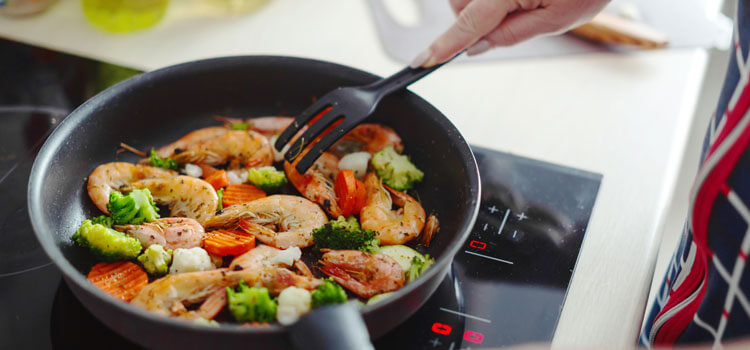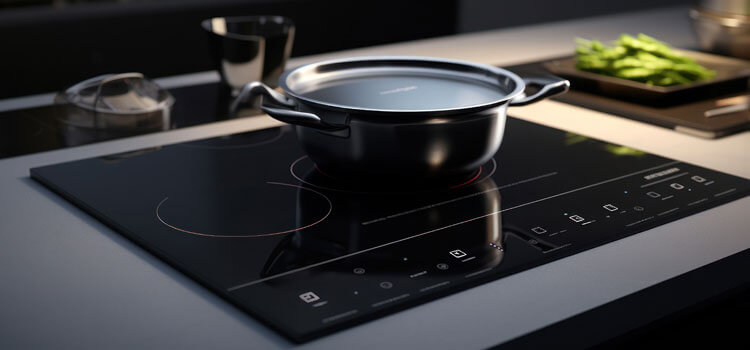
Venturing into the realm of culinary exploration, the landscape of cookware has undergone a transformative metamorphosis, with the advent of induction cookware heralding a paradigm shift in the dynamics of kitchen efficiency and precision. A tantalizing query often unfurls its enigmatic tendrils: Can the avant-garde prowess of induction cookware gracefully waltz upon the fiery stage of a gas stove? Let us embark upon a cerebral sojourn, unraveling the intricacies, debunking mythical whispers, and navigating through the ebullient confluence of compatibility, benefits, and challenges that dance between the realms of induction cookware and the venerable gas stove.
Inscrutable in its nature, induction cookware, a maestro of electromagnetic fields, orchestrates its culinary symphony by seducing the cooking vessel directly. In stark contrast to its archaic counterparts, which grovel at the feet of open flames, induction cookware demands a more sophisticated rendezvous with materials that share a magnetic dalliance. Cast iron and magnetic stainless steel, the chosen acolytes in this electromagnetic ballet, pirouette elegantly to the whims of induction cookware’s magnetic allure.
The ballet of induction cookware pirouettes into the realm of gas stoves, a fiery danse macabre fueled by the combustion of natural gas. To unravel the enigmatic tangle of compatibility between induction cookware and the tempestuous gas stove, one must traverse the labyrinthine intricacies of their respective culinary choreographies. While induction cookware pledges its troth to induction hobs, a select few dare to indulge in a polyamorous dalliance with gas stoves.

As these two culinary titans engage in a tempestuous tango, a symphony of advantages resonates through the culinary cosmos. The union begets the prodigious offspring of energy efficiency, a celestial progeny where the induction-compatible base becomes the conduit for a direct transference of heat to the cookware. Swift cooking times and an exquisite ballet of precise temperature control ensue, bestowing upon the culinary acolyte an experience akin to an odyssey through gastronomic nirvana.
Yet, in the labyrinth of gastronomic ecstasy, shadows of potential drawbacks cast an ephemeral pallor. Whispers of uneven heating waft through the culinary air, as certain users lament the capricious nature of induction cookware when courted by the fiery advances of a gas stove. Compatibility concerns, akin to an arcane incantation, arise, as certain materials recoil from the ardent flames of gas, invoking a specter of caution regarding the perils of overheating.
To traverse this culinary labyrinth, intrepid gastronomes must wield their knowledge with a deft hand. The selection of induction cookware, carefully curated to serenade the fiery temperament of gas stoves, becomes an art form. Adjusting the cadence of cooking techniques, a nuanced ballet in itself, involves the judicious use of low to medium heat settings, a delicate pas de deux to address the dissonance of uneven heating. The sanctity of proper maintenance and care becomes the mantra for ensuring the longevity and unwavering performance of this culinary symbiosis.
A spectral mist of myths shrouds the ethereal dance of induction cookware on gas stoves. However, amidst the nebulous whispers, tales of triumphant symbiosis emerge. Users, akin to alchemists, seamlessly integrate induction pots and pans into their gas stove rituals, unraveling the alchemical secrets of compatibility and culinary harmony.

In the pantheon of induction cookware, revered brands stand as titans of quality and performance, their names echoing through the culinary corridors. XYZ and ABC, paragons of induction-compatible cookware, have etched their names in the annals of gastronomic acclaim, a testament to their versatility and prowess. The echoes of user testimonials, akin to a chorus of culinary sirens, resound with praise for the energy efficiency and meticulous control bestowed by induction cookware upon the gastronomic odyssey.
Comparing the celestial dance of induction cookware with its traditional counterparts reveals a tapestry of unique benefits and potential challenges. The classical virtues of traditional cookware, a venerable maestro in its own right, find themselves juxtaposed against the dynamic and efficient ballet orchestrated by the confluence of induction and gas stove cooking.
As the culinary cosmos hurtles through the annals of time, a tantalizing horizon unfolds, pregnant with the promise of technological marvels. The future, an enigmatic tapestry woven by the loom of progress, holds within its folds the potential for even more efficient and user-friendly culinary solutions. A symphony of induction and gas stove advancements harmonizes in the anticipatory crescendo of culinary evolution.
Conclusion
In conclusion, the cosmic ballet of compatibility between induction cookware and gas stoves emerges as a fertile ground for gastronomic exploration. A nuanced understanding of the intricacies, benefits, and challenges becomes the compass guiding the intrepid gastronome through uncharted culinary constellations. Whether one navigates the celestial realms of a seasoned chef or the terrestrial plains of an enthusiastic home cook, the harmonious marriage of induction cookware and gas stoves promises a dynamic and efficient culinary odyssey.
